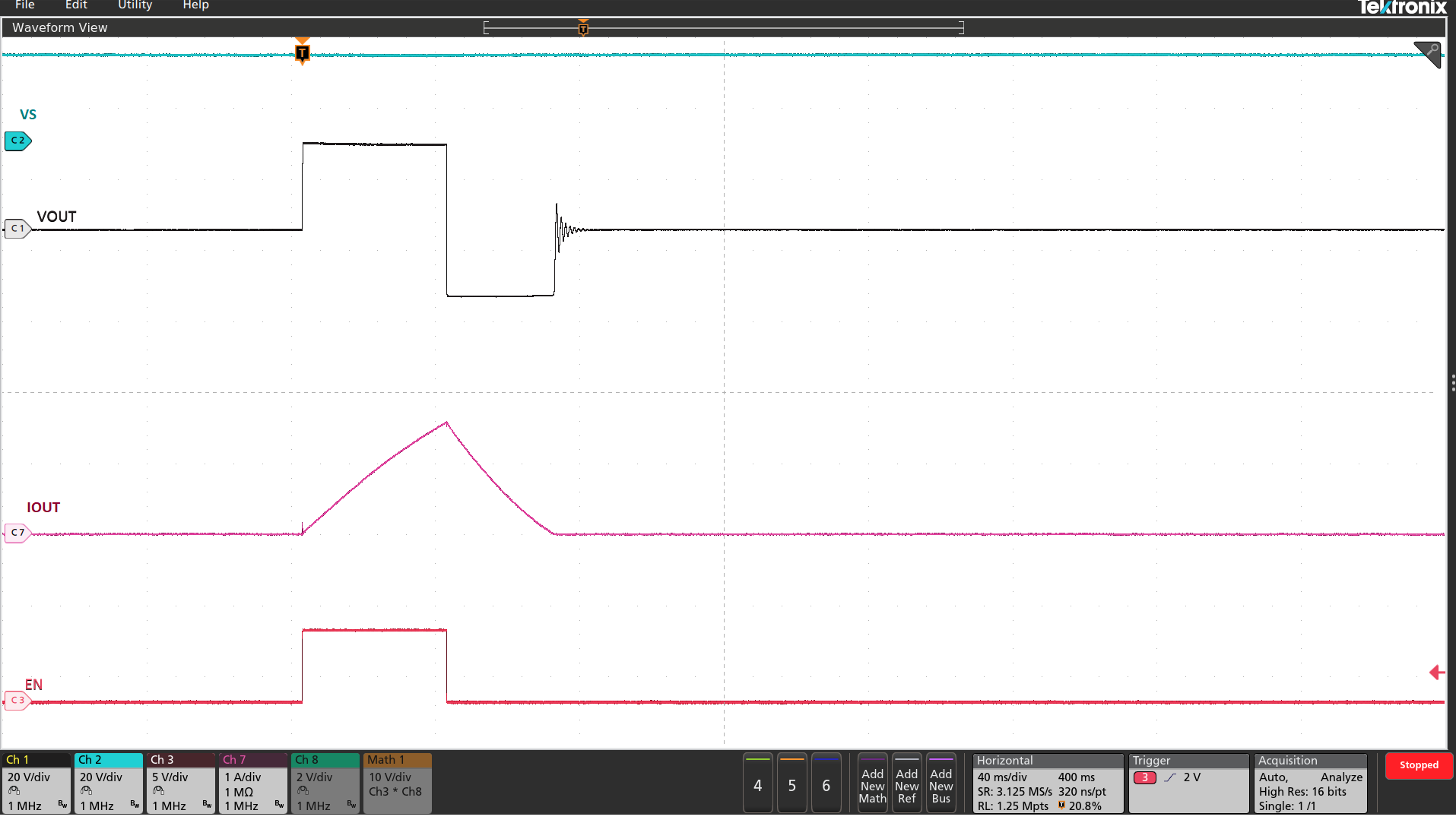SLVSGL4 September 2023 TPS1HTC30-Q1
PRODUCTION DATA
- 1
- 1 Features
- 2 Applications
- 3 Description
- 4 Revision History
- 5 Pin Configuration and Functions
- 6 Specifications
- 7 Parameter Measurement Information
-
8 Detailed Description
- 8.1 Overview
- 8.2 Functional Block Diagram
- 8.3 Feature Description
- 8.4 Device Functional Modes
- 9 Application and Implementation
- 10Device and Documentation Support
- 11Mechanical, Packaging, and Orderable Information
パッケージ・オプション
メカニカル・データ(パッケージ|ピン)
- PWP|14
サーマルパッド・メカニカル・データ
- PWP|14
発注情報
8.3.4 Inductive Load Demagnetization
When switching off an inductive load, the inductor can impose a negative voltage on the output of the switch. The TPS1HTC30 includes voltage clamps between VS and VOUT to limit the voltage across the FETs and demagnetize load inductance if there is any. The negative voltage applied at the OUT pin drives the discharge of inductor current. Figure 8-6 shows the device discharging a 400-mH load.
 Figure 8-6 TPS1HTC30 Inductive Discharge
(400 mH)
Figure 8-6 TPS1HTC30 Inductive Discharge
(400 mH)The maximum acceptable load inductance is a function of the energy dissipated in the device and therefore the load current and the inductive load. The maximum energy and the load inductance the device can withstand for one pulse inductive dissipation at 125°C is shown in Figure 8-7. The device can withstand 50% of this energy for one million inductive repetitive pulses with a >4-Hz repetitive pulse. If the application parameters exceed this device limit, use a protection device like a freewheeling diode to dissipate the energy stored in the inductor.
 Figure 8-7 TPS1HTC30 Inductive Load
Discharge Energy Capability at 125°C
Figure 8-7 TPS1HTC30 Inductive Load
Discharge Energy Capability at 125°C